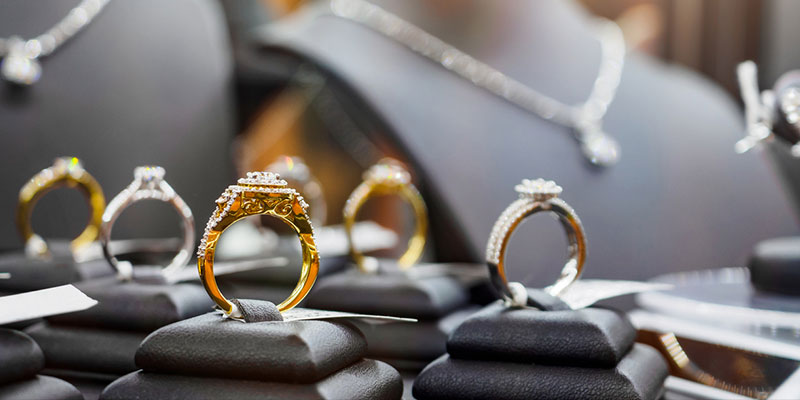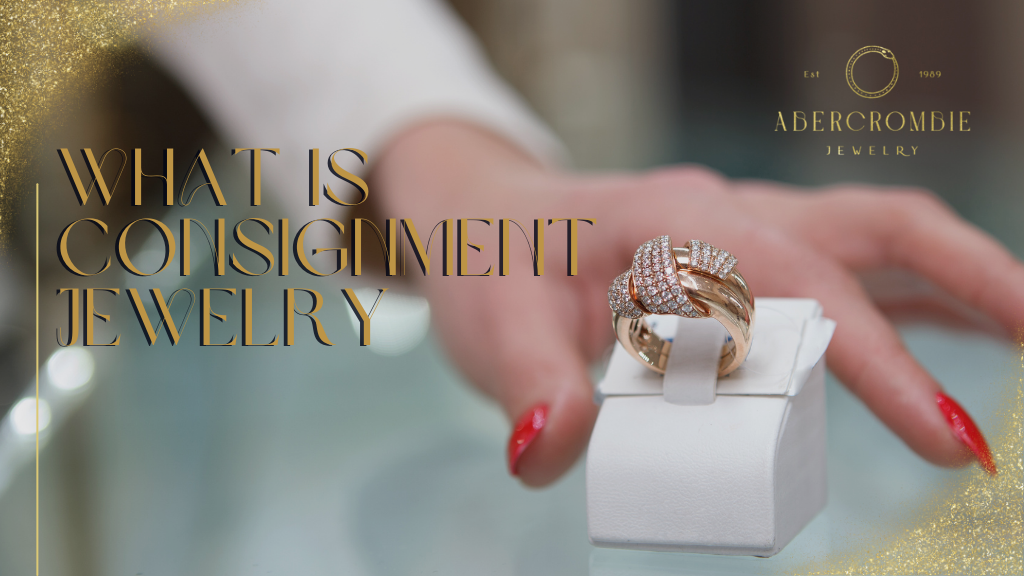A Comprehensive Guide to Consignment Precious Jewelry and Its Lots Of Benefits
Consignment jewelry offers an unique intersection of opportunity and worth for both customers and vendors, making it a noteworthy factor to consider in the precious jewelry market. By permitting sellers to preserve possession up until a sale is made, this strategy not just boosts exposure for distinct pieces yet also gives purchasers with access to a diverse array of items at competitive prices. As the landscape of customer preferences changes toward sustainability, the benefits of consignment precious jewelry come to be increasingly relevant. Recognizing the intricacies of this procedure might uncover advantages that are commonly neglected, motivating a much deeper evaluation of its potential impact.
What Is Consignment Precious Jewelry?
Consignment jewelry describes items that are sold on behalf of their owners by a third-party retailer or dealership. This setup permits people to make a revenue from their precious jewelry without the need to directly market or offer it themselves. In this model, the owner maintains ownership of the item till it is offered, which sets apart consignment from straight-out sales where ownership is transferred right away.

The consignment setup typically consists of certain terms regarding pricing, period of the sale, and compensation fees, which are commonly a percent of the sale rate. This structure permits versatility and guarantees that both the proprietor and the store have a vested rate of interest in successfully selling the item. Therefore, consignment fashion jewelry functions as a practical option for those seeking to liquidate their jewelry assets while reducing the effort entailed in the marketing process.
How the Consignment Refine Works
The consignment procedure starts with the owner bringing their fashion jewelry to a retailer or dealership who specializes in offering such items. The retailer examines the precious jewelry, analyzing its authenticity, problem, and market worth. This analysis is vital, as it figures out the possible list price and the commission framework for the consignment.
Once both events concur on the terms, a consignment arrangement is drafted, detailing the specifics such as the duration of the consignment period, payment rates, and any kind of relevant charges. The proprietor preserves ownership of the precious jewelry throughout this period, enabling them to recover it if it does not market.
The retailer after that presents the precious jewelry in their shop or online platform, marketing it to possible customers. They might use different techniques, consisting of specialist photography and critical placement, to improve exposure and draw in rate of interest.
Throughout the consignment duration, the store manages queries and arrangements on part of the proprietor. Consignment Jewelry. If a sale is made, the seller processes the purchase, deducts their payment, and remits the continuing to be funds to the proprietor. This structured procedure enables precious jewelry owners to sell their items without the worry of straight selling responsibilities
Advantages for Purchasers
Access to a varied variety of one-of-a-kind and usually one-of-a-kind jewelry pieces is a considerable benefit for buyers participating in the consignment market. Unlike traditional retail electrical outlets, consignment shops commonly include an eclectic selection of products sourced Look At This from different sellers, allowing purchasers to uncover unique design and styles that might not be available elsewhere.
Additionally, purchasing consignment fashion jewelry can typically result in substantial price financial savings. Many consignment items are valued reduced than their retail equivalents, supplying purchasers with the possibility to obtain premium products at a fraction of the initial cost. This affordability does not jeopardize high quality; numerous consignment pieces are crafted by prestigious brands or credible developers.
In addition, the consignment market commonly promotes sustainable shopping practices. By picking pre-owned precious jewelry, purchasers add to a circular economy, decreasing waste and the demand for new production. This eco mindful approach attract consumers that prioritize sustainability in their getting decisions.
Lastly, customers can enjoy the adventure of prize searching. The ever-changing inventory of consignment stores means that each browse through can yield brand-new discoveries, making the buying experience both rewarding and amazing.
Advantages for Vendors
Why do several jewelry vendors select to take part in the consignment market? The advantages are compelling and many. Initially, consignment enables vendors to display their items in retail settings without incurring the high prices of keeping a physical store. This arrangement minimizes overhead costs, enabling vendors to focus their resources on sourcing or producing quality jewelry.
Furthermore, consignment provides vendors access to a more comprehensive consumer base. By partnering with established consignment stores or galleries, vendors can leverage the store's existing customers, increasing the chance of sales. read the full info here This exposure is especially advantageous for little organizations or independent artisans wanting to obtain visibility in a competitive market.
Another considerable benefit is the flexibility that consignment supplies. Vendors can turn their inventory based upon market need, enabling them to keep their offerings fresh and enticing to prospective purchasers. This versatility aids vendors react to patterns and client preferences successfully.
Tips for a Successful Experience
Attaining a successful experience in the consignment jewelry market needs cautious planning and tactical execution. First, choose a trusted consignment shop recognized for its expertise and consumer service. Research study their track document, checked out reviews, and guarantee they have a solid on-line visibility, as this can considerably influence sales.

Establish clear interaction with the consignment store regarding prices, period of the consignment, and any kind of costs entailed. Recognize their plans on unsold things and returns to avoid misconceptions later on.
Consignment sales can take time, and it's vital to remain flexible concerning cost changes if required. Preserve a positive relationship with the consignment shop personnel.
Conclusion
In conclusion, consignment precious click for more jewelry offers as an important option for both customers and sellers within the jewelry market. Inevitably, the consignment process fosters a round economy, boosting the general experience for participants and adding positively to the precious jewelry market's landscape.
Consignment jewelry uses a special intersection of chance and value for both vendors and buyers, making it a significant consideration in the precious jewelry market. As a result, consignment precious jewelry serves as a sensible choice for those looking to liquidate their precious jewelry assets while decreasing the effort entailed in the selling procedure.
Why do many fashion jewelry vendors select to get involved in the consignment market?Accomplishing a successful experience in the consignment jewelry market calls for careful planning and critical execution.In final thought, consignment precious jewelry serves as a useful alternative for both buyers and vendors within the precious jewelry market.